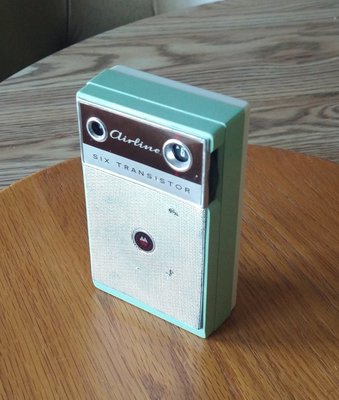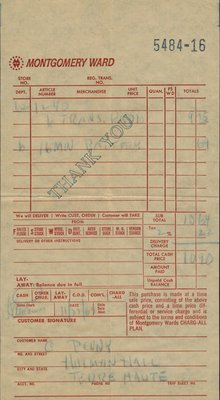r&r radios - rich
Randy and I have both taken up the radio restoration hobby and have completed dozens of radios over the past 7+ years. Most of these radios are from the vacuum tube era but we've done quite a few transistorized sets as well. Most of the vacuum tube sets are from the 1940's but we've each done some from the 1930's through the early 1960's. I think Randy has even done one or two from the late 1920's. Along the way we've each learned some valuable skills that we've been able to share to achieve some nice results. Below is a summary of how we got into this for those that are interested.
So, what got us started? I have been interested in electronics since an early age. I can remember trips to the telephone office with my Dad and being fascinated by the electronic equipment and all the wiring. My grandparents...Mom's parents...purchased a Philco 47-1230 new (Philco used the model year as the first 2 digits of the model number...hence this was built in the 1947 model year). When I was 17 (1972) I repaired this radio. When both of my grandparents had passed away I acquired the radio but by then it was no longer working. It sat in my basement for many years, gathering dust and mold, until early 2017, when I decided I wanted to make it work again. So I set about restoring it and worked on it for several months with only very limited success. Finally, I decided that this was a bad choice for a beginner to learn this hobby – AM, FM, shortwave, and a record changer. Any knowledge of vacuum tube circuits I once had was gone so I was re-learning. So I decided to set it aside and work on other simpler radios to try to learn what I was doing. After about a year and half I decided it was time to get back to the Philco. I quickly found a mistake I had made and once that was corrected the AM was working well. But the FM still didn’t work. It took me two or three more months to get that figured out, but I finally got it. The record changer needed a thorough cleaning and lubrication, but that’s easy enough to do. Finally, it was complete. All this time Mom knew I was working on it, but what she didn’t know was that I intended to give it to her. Randy and I decided to surprise her, and as it happened, it was near my grandfather’s (Mom’s dad) birthday so we decided to do it on that day. Now it sits proudly in her living room and it isn’t unusual to hear it playing when we go over there.
So how did Randy get involved? As it turned out, it was a bit of bad fortune that got him interested. In early September of 2017 he had a heart attack. He successfully recovered from that but then a month later he fell and broke his hip. We decided he should stay with Mom for a couple of weeks while he recovered. I knew he would be restless with nothing to work on, so I took him a few of my radio cabinets and some refinishing supplies and he worked on refinishing a few cabinets. While he was doing that he expressed an interest in learning how to do the electrical restoration as well. So I picked out a radio that would be his, and we spent most of that winter working on it. He would come to my house once or twice a week and we’d go through the restoration. I did most of the work but described it as I was going. He had many questions and soaked in the info rather well. Eventually I had him do some of the work so he could get the experience. He did the cabinet restoration and that radio turned out very nice. After that, he worked mostly on his own...initially he had many questions as he was working but they gradually tapered off to the point that he was on his own and has done some great work. He’s also restored several old sewing machines.
Here are a few examples of the radios I've completed. Click on each image to see a larger view.
PHILCO 47-1230
This is the previously mentioned radio that my grandparents purchased new in 1947, and it's the radio that got me started in the restoration hobby.
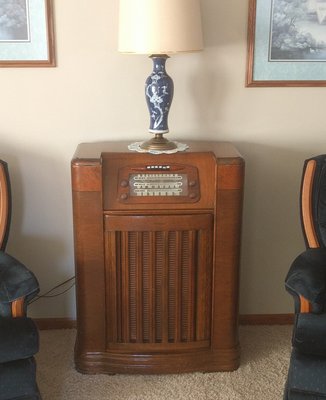
BALKEIT MODEL 52
Here is a Balkeit Model 52, which was built in 1932. This is the first radio that I actually completed. The speaker in this one was badly damaged so I had to learn how to repair that.
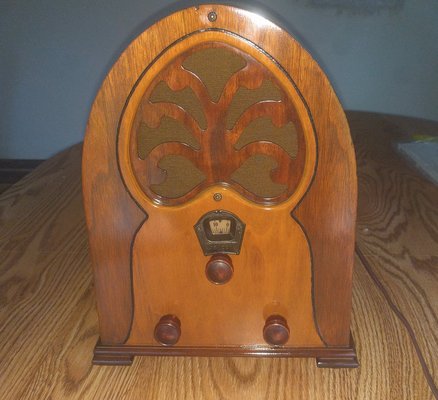
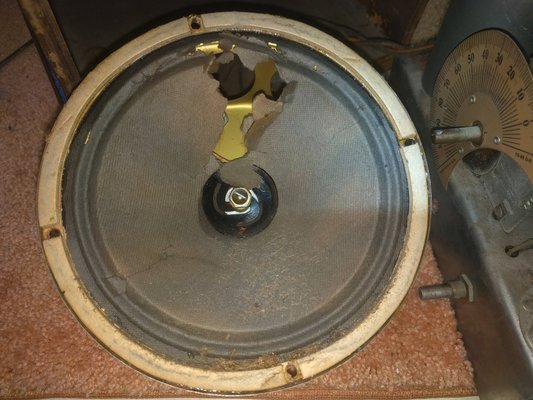
CORADIO
This is one of my favorites, primarily because of the restoration story behind it. This is a coin operated radio, probably built in the 1940's. Coin operated radios were used in hotels and motels to provide entertainment for the customers...put in a quarter and you could listen to the radio for 2 hours. Since there is money involved these radios are locked. This one has a lock on the back cover, and then once you are inside there is another lock on the coin box. Both locks on this one were locked and I didn't have the keys, so I had to learn how to pick locks to get them opened. Once I did I found that this radio had been home to a mouse at one time...it spent its last days inside the radio and all that remained was the skeleton and its nest. I've since restored another coin operated radio that has a wooden cabinet.

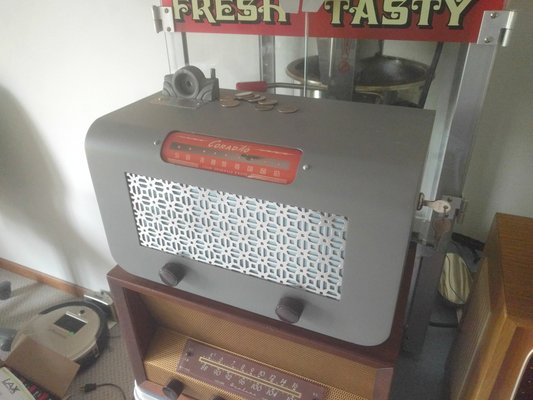
AIRLINE GEN-1240A
One more example. In the early 60's, Mom's dad gave me and each of my brothers an Airline GEN-1240A transistor radio from Montgomery Wards. I still have mine (pictured below) so once I started restoring radios I decided to restore it. It turned out well and is a prized possession. Since then I have bought about 15 more of these from eBay. I gave one to Randy for him to restore and I sent one to Will after I restored it. But one of these that I bought stands out. It came from a guy in California (I ended up restoring two other transistor radios for him...one had been his father's and the other had been his own as he was growing up) and it included the original box, owners manual and sales receipt, as well as a hand-written note from the original owner. Check out the note and then look closely at the receipt (click on it for a larger view)...the sale date was 11/22/63. Very cool!
